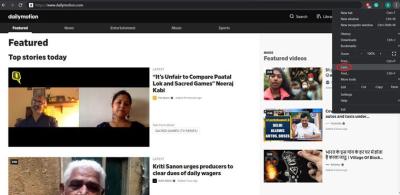LinkedIn has become an essential platform for professionals looking to network, find jobs, or showcase their skills. However, many users wonder about their privacy when searching for others or having their profiles viewed. Understanding LinkedIn's privacy settings is crucial for maintaining control over who sees your information and how your activity is perceived on the platform. Let’s dive into what these settings entail and how they can help protect your privacy.
Understanding Who Can View Your Profile Visits

When you browse LinkedIn, especially if you're checking out potential connections or colleagues, you might wonder: can they see that I've viewed their profile? The answer isn’t straightforward, as it largely depends on your privacy settings. Here’s how it works:
- Profile Viewing Options: LinkedIn offers three main visibility options for your profile visits:
- Full Profile: If you choose this option, your name and headline will be visible to anyone whose profile you visit.
- Private Profile Characteristics: With this option, others can see that someone viewed their profile, but they won’t know it’s you. They’ll only see vague information like “Someone at [Your Company]” viewed it.
- Anonymous Viewing: This setting completely conceals your identity. If you select this, you can browse profiles without the visited user knowing at all.
Why It Matters: Understanding these settings is key for effective networking. If you want to connect and engage without revealing your identity, anonymous viewing is beneficial. However, if you’re looking to make connections, being visible may work in your favor. It's all about striking a balance between privacy and opportunity on LinkedIn!
How LinkedIn Search Works

LinkedIn's search functionality is designed to help users connect professionally, making it easier to find potential employers, collaborators, or even old colleagues. When you use the search bar, LinkedIn employs a host of algorithms to return the most relevant results based on your query. Here's how it works:
- Keywords: The search engine considers the presence of your search terms in profiles, job titles, or skills. For example, if you search for "marketing manager," LinkedIn will prioritize profiles that include these keywords.
- Connections: If you're connected with someone or share mutual connections, their profiles will rank higher in your search results. This feature emphasizes the social networking aspect of LinkedIn.
- Location: LinkedIn considers geographical proximity. If you search for professionals in a particular industry, the platform will often showcase users in or around that location.
- Engagement: Profiles that actively engage with content on LinkedIn, like posts and articles, may appear higher in searches. This engagement signals that the user is active and may be more likely to connect.
So, if you’re curious about someone searching for you, keep in mind that while your profile can appear in their search results, LinkedIn does not notify users when someone has searched for them.
Privacy Options for Your Profile

Your LinkedIn privacy settings play a critical role in managing who can see your information and how you're perceived on the platform. Here’s a breakdown of some privacy options available to you:
- Profile Visibility: You can adjust who sees your profile by choosing between “Public,” “Connections only,” or “Private.” A “Public” profile is visible to anyone, while a “Private” profile limits visibility to your connections.
- Profile Viewing Options: LinkedIn allows you to browse profiles in private mode. When you enable this, users won’t be able to see your name or profile when you view theirs. However, you won't see who viewed your profile either.
- Search Visibility: This setting controls whether your profile appears in search engine results outside LinkedIn. You can turn this off to keep your profile more discreet.
- Activity Broadcast: You can toggle whether your connections are notified when you make changes to your profile or share activity. This helps manage what your network sees about your professional journey.
Customizing these settings can provide you with a sense of control over your online presence and help protect your privacy while networking on LinkedIn.
5. Implications of Your Search Activity
When you search for someone on LinkedIn, several implications come into play. It’s not just about finding contact information or job opportunities; your search activity can reveal a lot about your professional intentions and interests.
First, LinkedIn may notify the person you searched for, depending on your privacy settings. This notification can lead to various interpretations:
- Interest in Collaboration: If you're in the same industry, they might think you're interested in a partnership or a job offer.
- Networking Intent: They could perceive your search as a desire to expand your professional network.
- Curiosity: Sometimes, people search out of pure curiosity. However, this could raise questions about your intentions.
Moreover, frequent searches could create a pattern that others might notice. For example, if a recruiter frequently searches for candidates in a specific field, it could imply a forthcoming job opening. This kind of activity could bring both opportunities and unwanted attention.
Transparency is essential because your search behavior contributes to your personal brand. Make sure your searches align with your professional goals and that you’re comfortable with the potential implications.
6. Best Practices for Maintaining Privacy on LinkedIn
Maintaining privacy on LinkedIn is crucial, especially given the platform's professional focus. Here are some best practices to keep your search activity discreet:
- Adjust Your Privacy Settings: Go to your LinkedIn privacy settings and select who can see your connections and activity. You can choose “Only you” for maximum privacy.
- Use Incognito Mode: When searching for others, consider using LinkedIn’s “Private Mode.” This way, your searches remain hidden, and the people you look up won’t know you’ve checked their profiles.
- Limit Your Profile Visibility: You can also limit how much information is visible to people who aren’t your connections. This includes your profile photo and headline.
- Be Selective with Connections: Only connect with people you know or genuinely want to network with. This helps control who can see your activity.
Following these practices can help you navigate LinkedIn more securely, allowing you to focus on networking without the stress of unwanted attention.
Can Someone See If I Search for Them on LinkedIn
LinkedIn has become an essential platform for networking and professional growth. However, many users wonder about the privacy implications of searching for someone on this social media site. The question arises: can someone see if I search for them on LinkedIn? The answer is nuanced and depends on various factors.
When you search for someone on LinkedIn, the visibility of your search can vary:
- Public Profiles: If you are connected with the person or if their profile is public, they may see your name in their "Who's Viewed Your Profile" section.
- Private Profile Settings: If you have a basic account, your name and headline are typically visible when you view someone's profile. However, you can adjust your settings.
- Anonymous Browsing: If you want to search for someone without them knowing, you can switch to anonymous browsing mode in your LinkedIn settings. In this case, your search activity remains undisclosed.
In addition, if someone views your profile, you can see the number of profile views but not specific identities unless they have opted to share that information. LinkedIn also provides premium users with more detailed insights into who has viewed their profiles.
Here’s a brief comparison:
| Setting | Visibility |
|---|---|
| Public Profile | Can see your name |
| Limited Profile Visibility | Can see partial information |
| Anonymous Mode | Cannot see your name |
Understanding these features is crucial for managing your privacy on LinkedIn.
Conclusion: Navigating Privacy on LinkedIn
In conclusion, while LinkedIn offers options to maintain your privacy when searching for others, users should be aware of the settings and implications of their profile visibility to effectively manage their online presence.










